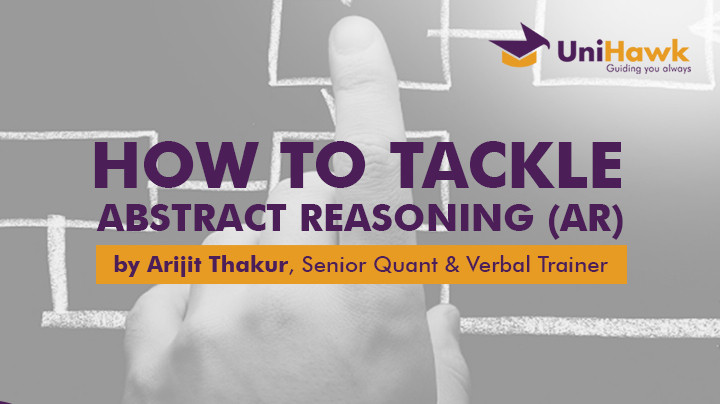The AR section features 50 questions, about 40 of them comprising sets of 5 each. To answer any of them, you have to detect a pattern in a given set of pictures. You have just 12 minutes to answer them all. That is not unreasonable given that whether you can answer any of these questions at a given time depends on your frame of mind at the time. Since the “frame of mind” does not usually change in 5 or 10 minutes, spending more than 15 seconds on any independent question or more than 1 minute on any set of questions is totally useless; if you can’t figure out the pattern in 45 seconds, it’s highly unlikely that you will do it any time in the next 5 minutes. And the failure to identify a pattern does not mean you are dumb. It just means that the question did not match your frame of mind at the time.
Does this dependence of the “frame of mind” make it totally impossible to predict how well a specific candidate will perform in this section? Absolutely not. There are many different patterns to be detected in an AR section and all of them cannot be incompatible with your frame of mind at any given time. So a particular frame of mind cannot be incompatible with all – even the majority of – questions in the section. In short, move to the next question every 15 seconds.
To find the patterns, you need to consider just 5 different factors in every picture: shape, size, colour, placement and orientation. Of course, the last does not concern any circle because a circle does not point in any direction. Both of the last two features of any shape must be considered in isolation as well as in relation to those of the other shapes in the same picture. There can be only three absolute colours in any picture, namely black, white and grey, but an uncountable variety of black or grey stripes, dots or checks can appear too. The distinction in size doesn’t matter in most pictures. Where it does, the shapes can be divided into only 2 groups based on size alone: large and small.
Shape, undoubtedly, is the most important factor. It can relate to the number or type of sides (straight lines or curved lines), number of intersections or overlaps, number of corners or the impact of rotation on the shape. The numbers that pop up while assessing the shapes (for example, the number of sides or intersections) can be either the grand totals or category totals. Both can be important. Indeed, the difference between the different category totals can be important too. The pattern might reside in the facts that some of these numbers are odd while the rest are even, that some are prime while the rest are composites, that some are multiples of one particular integer while the rest are multiples of another integer.
The pattern may reside only in a subsection of the elements, or involving all the elements in the picture. In the former case, the irrelevant elements work as distractors. Size and colour based patterns deserve a special mention here. In many questions, if the pattern involves only the larger shapes, the smaller ones are just distractors, or vice versa. Similarly, if the pattern involves only the shapes of one or two colours, the shapes with the other colours are just distractors.
On the benefits of proper training in AR, I can say only one thing. Nobody needs to teach you to open your eyes and look at the pictures. You are already capable of doing that. And you have to keep doing that, with hundreds of questions from reliable sources of UCAT practice material. The rather abstruse difference between looking and seeing is what makes the trainer relevant.
As AR is much more a test of skills than a test of knowledge, the ideal AR trainer does not spend more than 15 or 20 minutes lecturing students in a 90 minute or 2 hour class. The rest of the class should be spent solving problems together. The trainees benefit much more from watching the trainer solve the puzzles than from hearing about how to solve them. We know that because we have noticed a significant correlation between the number of hours spent solving problems jointly by teachers and students and the actual UCAT AR scores. No such correlation has been found between the number of hours spent lecturing by the teacher and the students’ actual scores.
by Arijit Thakur, Senior Quant & Verbal Trainer





